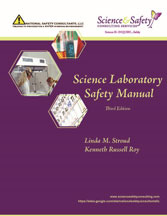



Find all of your laboratory and workplace safety supplies at Safety Emporium!
 Lesion |
 Glossary Index |
 Leukemia |
| MSDS Topics |
Free Sites | FAQ's | Regulations | Glossary | Software | Suppliers |
| Books | Forum | Poll | Fun stuff | Quiz | Store | |
| Understand your MSDS with the MS-Demystifier | Search ALL our MSDS info | |||||
Lethargy is a physical state of sluggishness, apathy (indifference), inattention and/or reduced physical activity, usually from illness, overwork or chemical exposure. Lethargy may also be described as stupor, severe drowsiness, severe fatigue, exhaustion, or weariness.
A lethargic person lacks energy and feels unwilling and/or unable to do anything.
Chronic fatigue syndrome also known as myalgic encephalomyelitis, is a poorly understood condition of fatigue or "mind fog" that persists for months or years. It is marked by:
The causes of chronic fatigue syndrome are not well understood although research is ongoing. Chemical exposure is not believed to be a cause.

This guide to safer laboratories is available from Safety Emporium.
Safety Data Sheets may list lethargy or drowsiness as a symptom of acute (short-term) exposure to the material. This information would be found in Section 11 (toxicological information) of the SDS.
Inhalation of vapors or gases is a common cause of lethargy. Lethargy can dull the victim's awareness of the danger, and he may fall asleep or become unconscious before being able to act. If the victim is not removed to fresh air, continued exposure could result in systemic injuries, coma, and death.
A particularly dangerous example of a chemical that causes lethargy at relatively low concentrations is carbon monoxide. Even non-toxic materials can present an asphyxiation hazard by createing an oxygen-deficient atmosphere.
See also: malaise, prostration, stupor, syncope.
Additional definitions from Google and OneLook.
Entry last updated: Tuesday, January 3, 2023. This page is copyright 2000-2025 by ILPI. Unauthorized duplication or posting on other web sites is expressly prohibited. Send suggestions, comments, and new entry desires (include the URL if applicable) to us by email.
Disclaimer: The information contained herein is believed to be true and accurate, however ILPI makes no guarantees concerning the veracity of any statement. Use of any information on this page is at the reader's own risk. ILPI strongly encourages the reader to consult the appropriate local, state and federal agencies concerning the matters discussed herein.